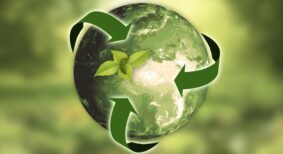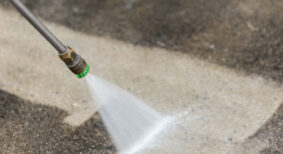Canada has been a leader in transitioning from traditional to environmentally-friendly cleaning products. In turn, educational facilities are embracing green cleaning regimes, where such use is essential because children are more vulnerable to environmental exposures from dust and chemicals. Not only are young immune systems underdeveloped, but schools often harbour poor ventilation.
According to a report from Canadians for a Safe Learning Environment, about one million Canadians have been diagnosed with environmental sensitivities (ES), which include multiple chemical sensitivities. ES occurs when one experiences health impacts, such as asthma, after exposure to pesticides, chemicals, moulds, dust and other triggers. Moreover, the Canadian Human Rights Code recognizes ES as a disability, and educational institutions must accommodate those who have been diagnosed.
Harsh cleaning chemicals are a trigger for asthmatics, according to the Canadian Lung Association. If powerful cleaning chemicals have been used to clean hard surfaces and carpeted floors, fumes can negatively affect indoor air quality and be inhaled, increasing the possibility of asthma attacks and other respiratory problems.
Improved student performance and attendance are other results when schools use sustainable low-toxic materials and have good IAQ. The Canada Green Building Council states that a classroom environment can affect a child’s academic progress over a year by 25 per cent, and that “using green cleaning solutions will reduce environmental hazards that negatively affect childhood growth and development.” Improved IAQ has minimized absenteeism and contributed to a 65 per cent reduction in asthma cases among elementary school students.
Here are some tips for selecting healthy cleaning alternatives and streamlining the product transfer process:
Initial steps to a green regime
- Administrators and cleaning professionals should know that while all the leading green-certification organizations—Green Seal, UL Environment and GREENGUARD—analyze products according to their impact on IAQ, the emphasis of each certification can vary. Of the three, GREENGUARD has the most stringent criteria and places the most emphasis on protecting IAQ.
- Conduct an inventory of all cleaning solutions and products currently used in the facility, and then, working with a knowledgeable distributor, look for green alternatives to those products. Make sure they are certified and from respected manufacturers. Green cleaning is about more than just chemicals. It also includes using cleaning tools and equipment that efficiently remove contaminants and minimize the impact cleaning has on the environment.
- When selecting green cleaning solution alternatives, look for products that can multi-task. This reduces the number of cleaning solutions that must be purchased, reduces worker training needs, promotes worker safety and helps promote sustainability.
- Ensure that all custodial workers are trained on the use of new products. Green cleaning solutions, for instance, are often highly concentrated to help promote sustainability. This typically means that an auto-dispensing system will need to be installed for proper dilution purposes.
- As part of the transfer to green alternatives, replace traditional cleaning cloths and mops with high-quality microfiber. There is substantial evidence that suggests microfiber helps reduce the overall amount of cleaning solution needs.
- Green cleaning also involves equipment. For example, vacuum cleaners with high-efficiency filtering systems can help protect IAQ. In addition, floor machines with built-in vacuum systems help reduce the amount of soil and dust released into the air when polishing or burnishing floors.
- Custodial workers need to be trained on the use of new green cleaning products and implement green cleaning procedures and best practices. In response, ISSA, the worldwide cleaning association, has developed the Cleaning Industry Management Standard-Green Building training program.
Streamlining the product transfer process
- Educational facilities often wonder what to do with old cleaning solutions, tools and equipment. If school districts decide to implement a green program at the beginning of the new school year, custodians and administrators may grapple with the transitioning process. There are three ways to handle such change.
- Contact the supplier (or manufacturer) and see if they will take back the traditional cleaner and replace it with a comparable green alternative. Suppliers will often agree because a school and school district are important customers.
- Finish the old cleaning solutions and replace with green alternatives when depleted. Administrators often take this step.
- Dispose of old cleaning solutions. If handled properly, this is an alternative. Many traditional cleaning solutions do contain ingredients that may require special handling for disposal.
- For an effective green cleaning program to be implemented, all products must contribute to the same goal: protecting health, indoor air quality and reducing the environmental impact.
Paul Goldin is vice-president of Professional Cleaning Solutions for Avmor, Canada’s leading provider of professional cleaning solutions. Avmor’s innovative products and cleaning programs promote efficient, healthier and sustainable practices that exceed performance expectations. He can be reached through the company website at www.avmor.com or pgoldin@avmor.com.








